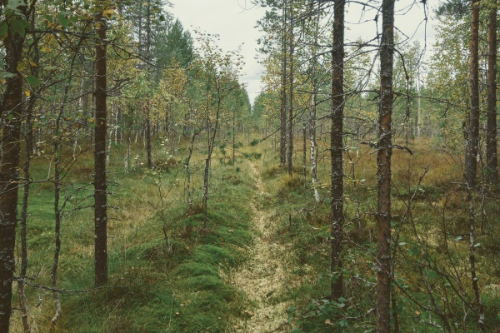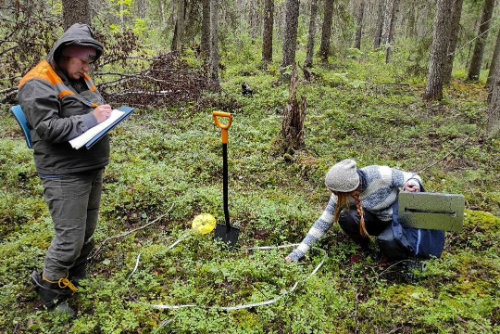Special attention is given to the low-carbon agenda. As part of the project, systems are being developed for data accounting as well as for on-the-ground and remote monitoring of carbon pools (stock) and greenhouse gas fluxes in Russia's forests and other terrestrial ecosystems.
– Estimating carbon pools and fluxes is a topical task for the scientific community on a national scale. This is a prerequisite for determining specific indicators: how much carbon is accumulated in Russian territory or, on the contrary, is released to the atmosphere. We need data on different regions and ecosystems so that we can, among other things, develop certain economic actions, - explained KarRC RAS Director General Olga Bakhmet.
Preparations for the program have been underway since 2021. Karelian Research Center RAS took an active part in it. The Government Order to launch the project was issued in the fall of 2022. A number of consortia of scientific organizations were created, one of them - for studying carbon pools and carbon dioxide fluxes in forest ecosystems. It was headed by the Center for Forest Ecology and Productivity RAS (Moscow), and Karelian Research Center RAS became one of the main participants.
A conversation on the Science Day. How much carbon do Karelian forests store up? | KarRC RAS Director General Olga Bakhmet in “Topic of the Day” on Sampo TV 360 channel
In the course of the fall, 43 specialists from the Forest Research Institute, Institute of Biology, and Department for Multidisciplinary Research KarRC RAS worked on the carbon project. To estimate the dynamics of pools and fluxes, scientists had to restore and survey the network of sample plots established in mid-boreal forests in 2009. This includes 50 points on a grid of geographic coordinates with a grid size of 32x32 kilometers.
In each plot, tree stand volume was measured, the above- and underground parts of the ground vegetation were studied, and soil samples were taken. All of this was necessary to measure the carbon stores in each component of the ecosystems and to compare them against previous data. The challenges for the fieldwork were the difficulty of access and remoteness of the sites, and the short field season. The work was conducted non-stop: while some scientists traveled to the forests to collect samples, their colleagues in the laboratories analyzed the collected material. Despite the difficulties, the task was completed on time. Within two months, the specialists managed not only to survey the forest ecosystems, but also to accomplish the necessary laboratory work.

Researchers participating in the project (left to right): Anton Solodovnikov, Gulnara Akhmetova, Lyubov Kantserova, Vladimir Karpin
Next, the scientists processed the data by mathematical-statistical methods, calculated the current carbon stores in tree stands, ground vegetation, and soils, and evaluated the dynamics versus the previous round of surveys.
One of the findings, e.g., is that the carbon stores in forest soils vary greatly depending on their hydrological regime. On average, they are about 188 tons of carbon per hectare. Yet, while they may be less than 1 ton per hectare in dry sites, the stores in moist forests are more than 800 tons! On average, mid-boreal soils of Karelia annually accumulate almost 5 tons of carbon per hectare. Paludified pine forests aged 20-90 years accumulate 9 tons of carbon per hectare or more, while spruce forests on slightly moist soils accumulate almost 130 tons of carbon per hectare. On average, tree stands in the middle taiga subzone of Karelia contain about 70 tons of carbon per hectare.
In addition to fulfilling the carbon estimation tasks as planned, the scientists laid the groundwork for further research. They collected data on carbon dioxide emissions from forest soils. Methods for remote sensing of specific natural ecosystems the Earth were tested and tuned. Plots for detailed studies of carbon pools and fluxes were selected in the Kivach Strict Nature Reserve.

– All of the tasks set for us have been fulfilled. We obtained new data on carbon stores in soils and vegetation, assessed the dynamics of their change, and laid down the foundation for a network of monitoring carbon and greenhouse gas fluxes in terrestrial ecosystems. All of this will supplement the all-Russian monitoring system with data for Northwest Russia, - Olga Bakhmet summarized.
At present, proposals and recommendations from organizations participating in the project are being prepared and the terms of reference for the new season are being developed.
Photos by Anton Solodovnikov, Gulnara Akhmetova, Vladimir Karpin




